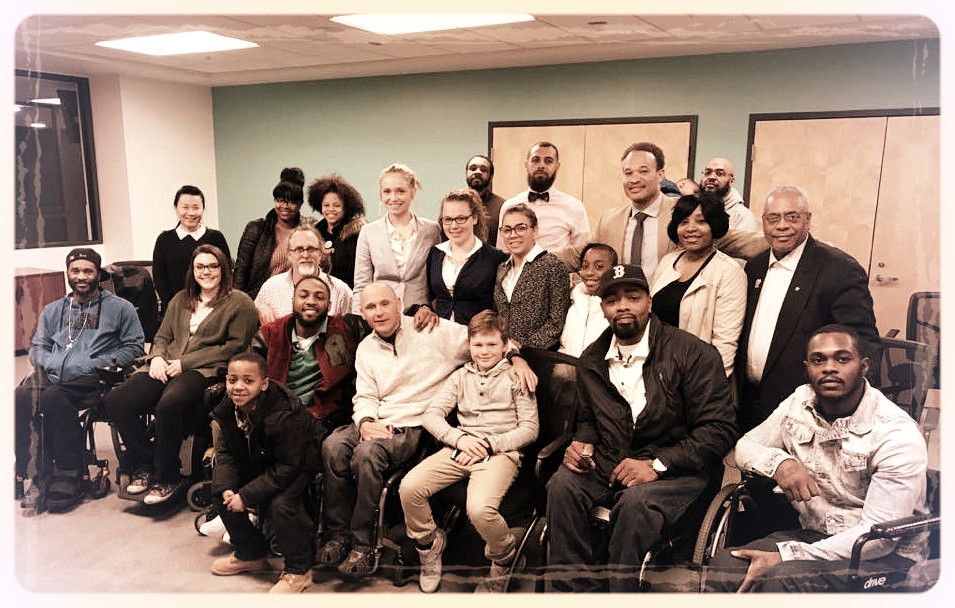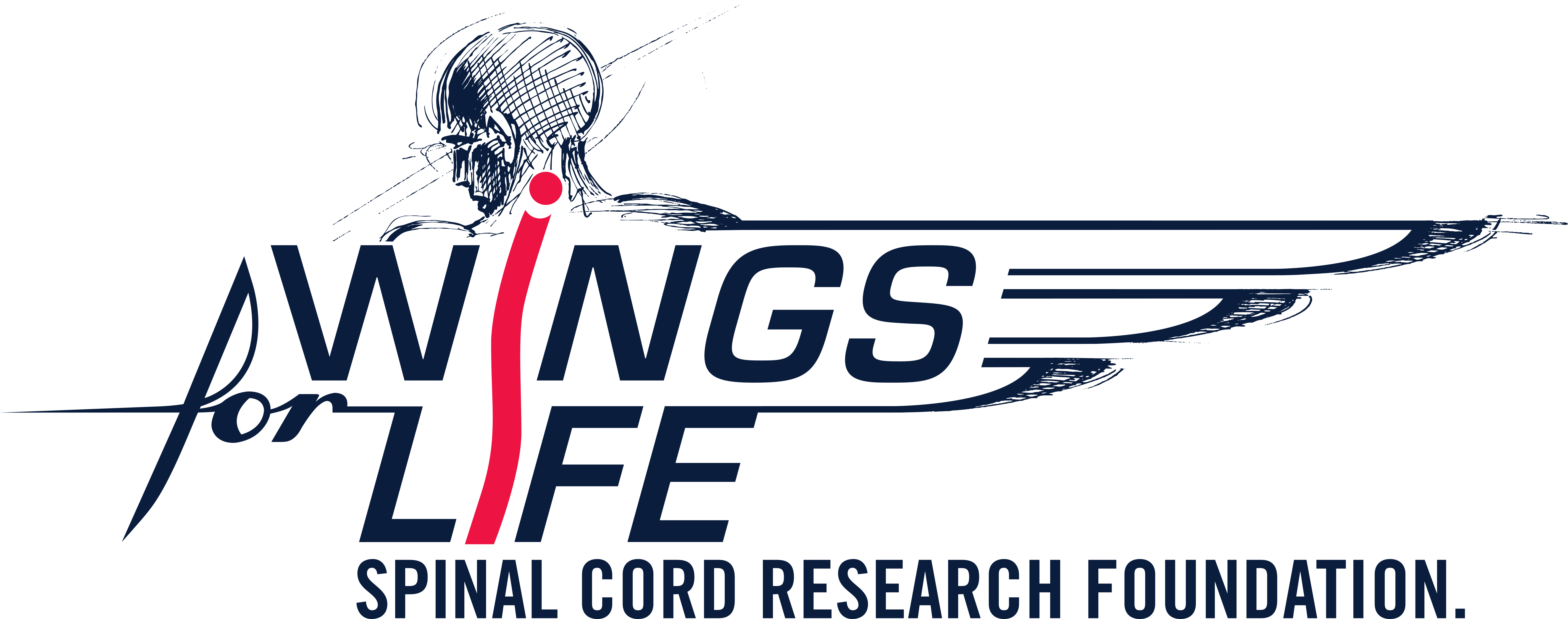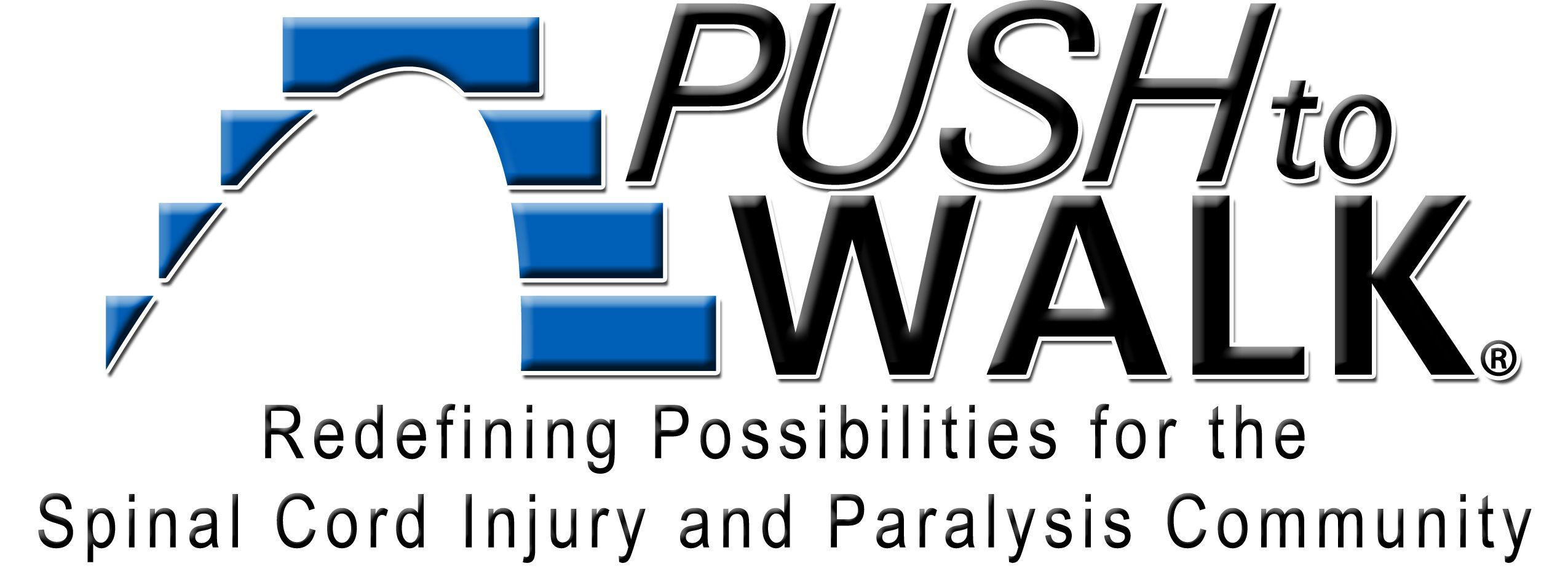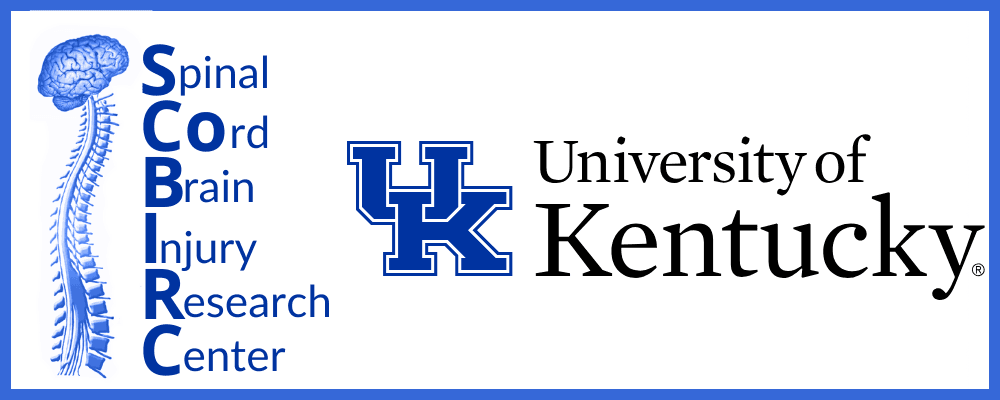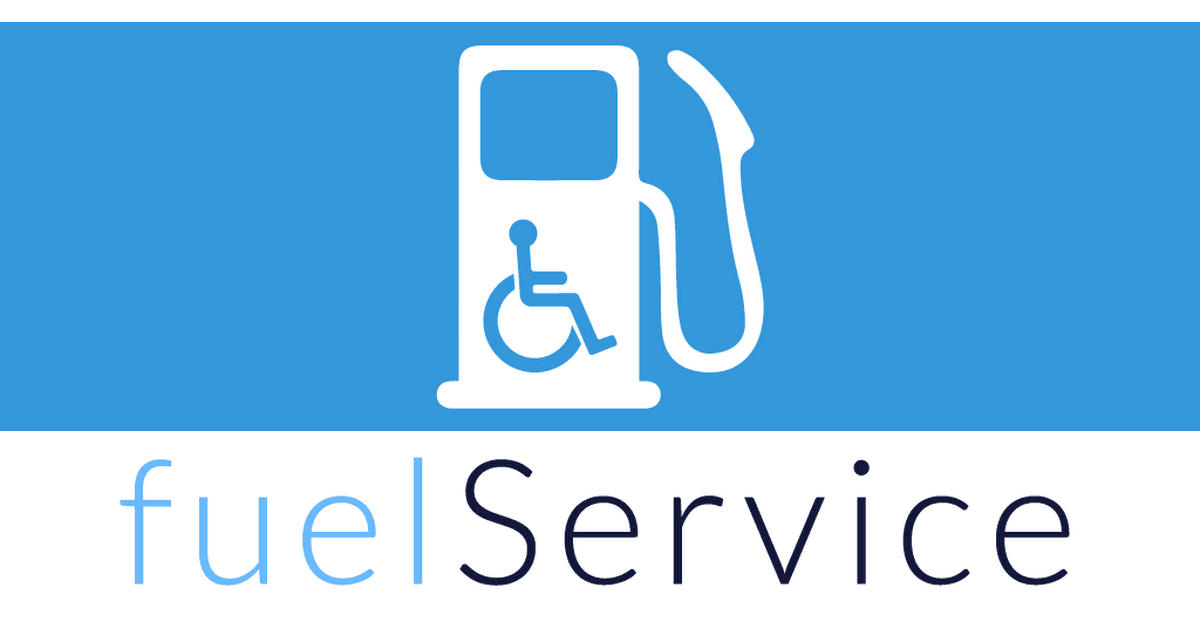May 9, 2024
Hold On While I Pee
Quinn Brett
Tell me you are paralyzed without telling me you're paralyzed.
For those of us who work remotely, we all dip on and off camera during online meetings. For those of us who are paralyzed and work remotely, those off-camera moments often have to do with our secondary complications. One being our peeing problems.
When you suffer from a spinal cord injury (SCI), managing all of the secondary issues that come along with it - like an inability to control our bladders - can be frustrating. And that loss of control varies widely. We might have a new but distant sensation of a full bladder. Or, we might have random muscle spasms indicating a full bladder. Sometimes these spasms let out a little tinkle; and other times they initiate a full release. Some of us might experience a sudden increase in body temperature, while others experience nothing at all - except the inability to feel or release any urine without using a catheter. Fun times!

Above, my U2FP colleagues: Jason Stoffer and Jake Beckstrom (bottom) with Matthew Rodreick and me (top). Jason is a para like me and Jake is a quad. Only Matthew lives without a spinal cord injury (though as a father to a son with an SCI, he is well aware of this issue).
Okay, to be honest it is more than frustrating, it can be debilitating. Headaches and migraines. Blood pressure issues, which means fainting, confusion, blurred vision maybe even vomiting. Increased spasticity can be painful and difficult to move around with uncooperative muscles twitching everywhere. Then there are the urinary tract infections…and even worse (see Jason’s first hand experience with this). Again, these are all issues that can happen just because of the paralyzed bladder!
For me, the time between my body signaling the need to pee and when it might release is also difficult to predict. I might be on a video call and be okay waiting for another 10 minutes, able to wrap up my weekly report or it might be so urgent that by the time I reach up to turn off the camera, I am already pissing myself.
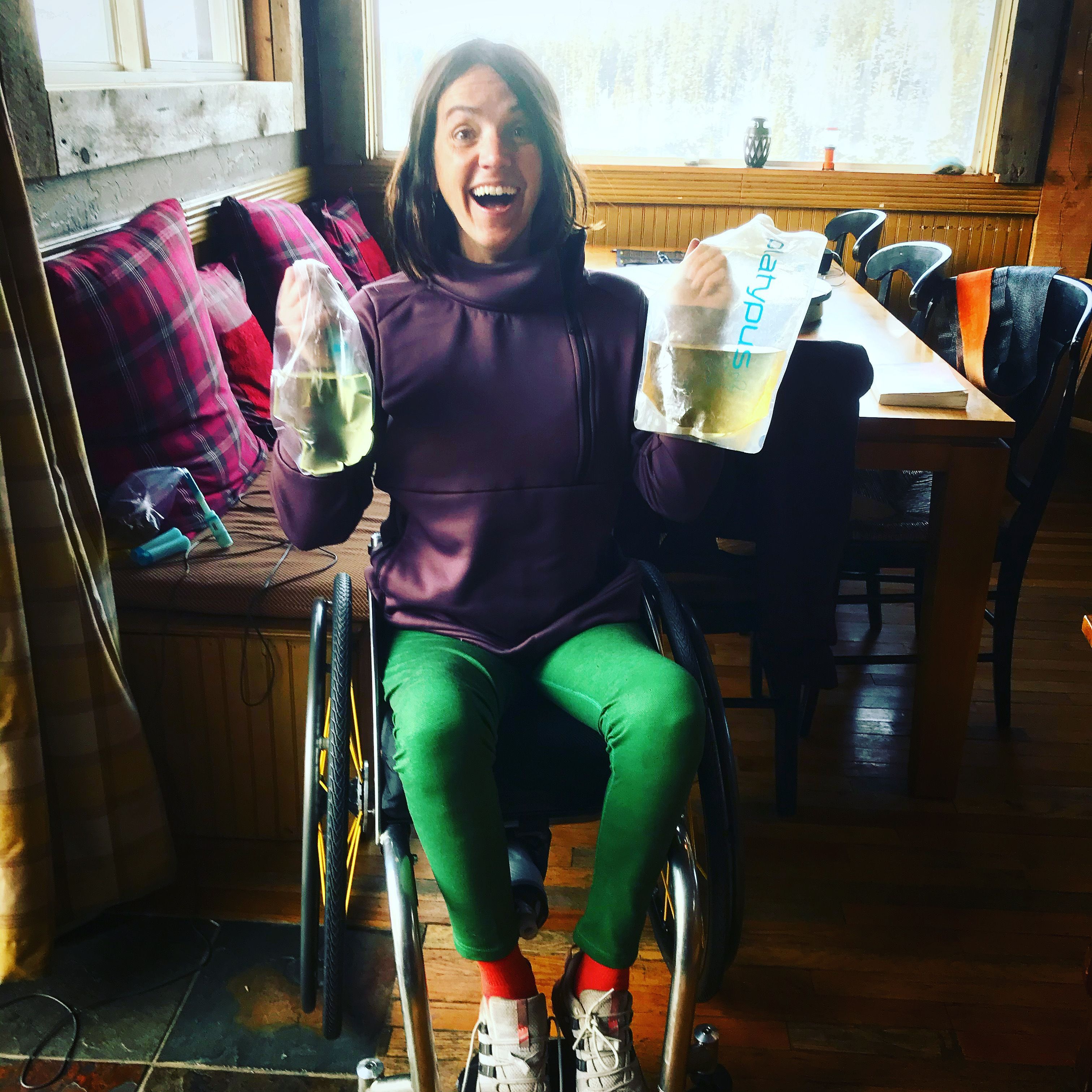
Me, with a bag of urine and a bag of white wine - can you tell which is which?!
This is what U2FP means when we say things like “pursuing functional recovery after spinal cord injury.” Getting my bladder functioning again would be a big deal - but it’s not what most people immediately think of when they hear the word “cure” or “cures.” So what is U2FP doing to address one of the many secondary issues we suffer from, like bladder incontinence? We’re putting people like me, with an SCI, at the decision making table to influence what research gets funded. That’s how our legislative bills, passed by our Cure Advocacy Network (CAN), are structured. To give us the power.
Take the CAN’s work in Minnesota. Led by Unite 2 Fight Paralysis efforts, the state of Minnesota established the Spinal Cord Injury and Traumatic Brain Injury Grant Program effective July 1, 2015. The University of Minnesota’s E-Stand Trial was an early recipient of this Research Grant Program through Minnesota Statute 136A.901. E-Stand is the second largest study in the world to use epidural spinal cord stimulation to restore function after thoracic spinal cord injury, focusing on the quality of life improvements that the patient is most interested in, from voluntary movement to urinary control and reduced spasticity in muscles.
In working towards the big goal of returning our bodies to their pre-injury states, we should not fear or shy away from the smaller goals that would improve our quality of life. U2FP places people, like me, with a spinal cord injury at a variety of stakeholder tables, with a mission to expedite functional recovery research. This important aspect of SCI community participation means I have a voice in the spinal cord research labs trying to solve the very problems of my bladder issues. I can directly let the researchers know that while running again is nice and all, a small step in research would be to return bladder sensation and control.
By establishing avenues that fund promising research like the EStand trial to deliver improved bladder function (along with many other recovery endpoints), U2FP is doing the hard work of system change.
And who is driving this system's change for functional recovery? You are! Your monthly donations directly make our work possible, fueling researchers and other partners in the SCI community to move the needle.
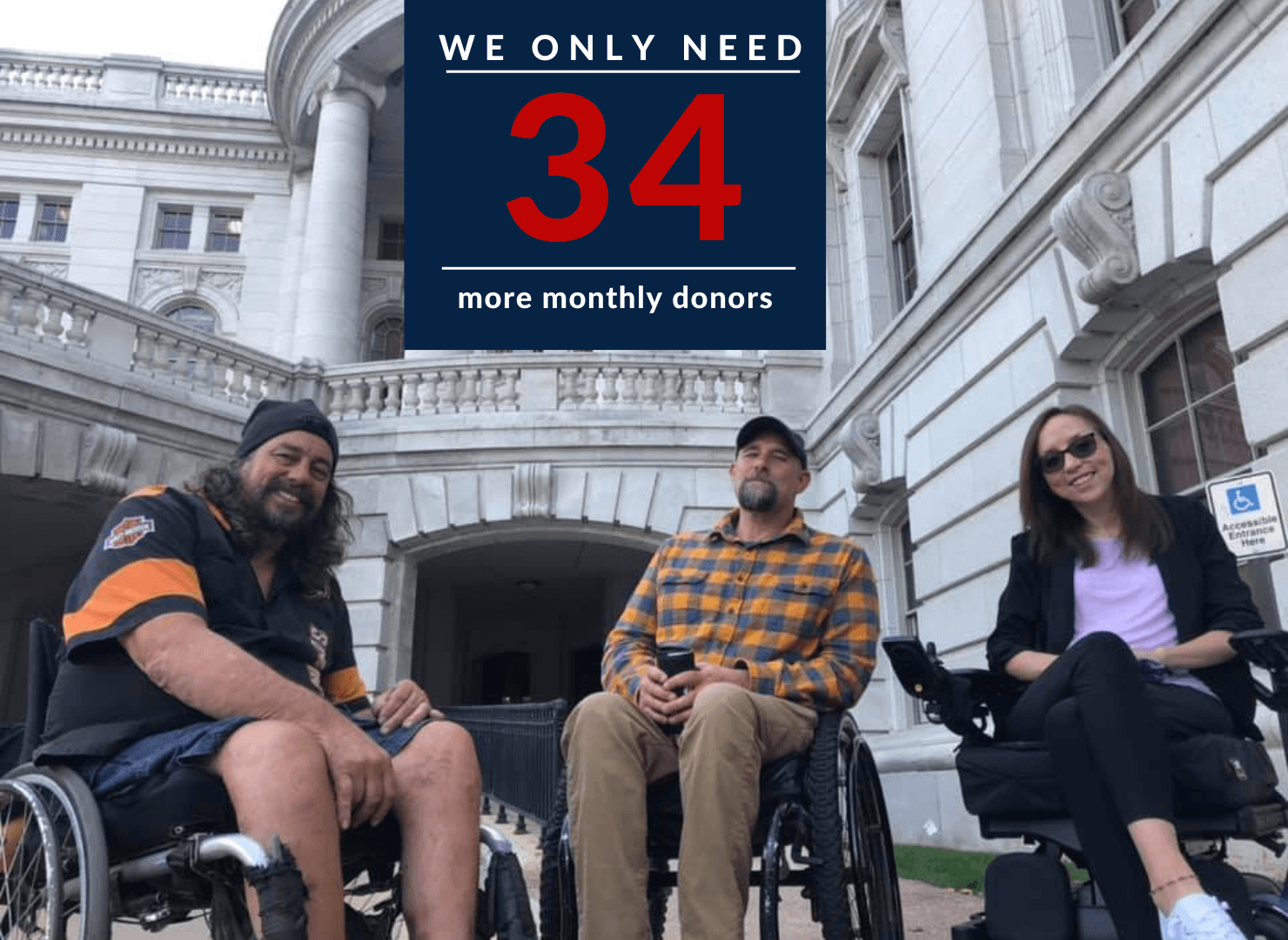
These are our Wisconsin CAN advocates, John Martinson (left) and Samantha Troyer (right), who are pushing for legislation like we've passed in Minnesota. Your support helps them, along with Jason Stoffer (center), our CAN Manager, to advocate for therapies that could lead to recovery of function!
I urge you (along with my bladder) to consider becoming a monthly donor. Collectively your monthly donations fuels our direct impact on the research and quality of life improvements in those of us with a spinal cord injury. AND, as a monthly donor, you and I get to chat and develop a relationship beyond the screen! Thank you!

